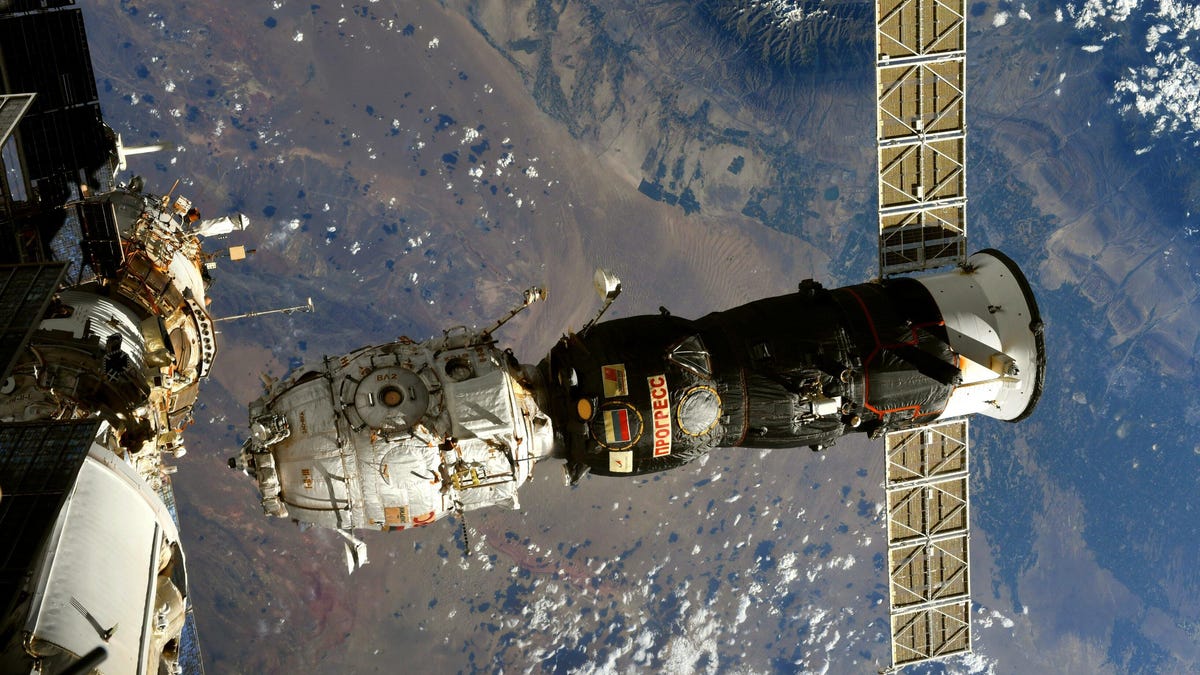See astronaut's wild view of a discarded ISS module burning up
The ISS said goodbye to the Russian Pirs module and sent it off to turn into a streaking fireball.
The International Space Station just got a new addition, the Russian-made Nauka laboratory, which docked Thursday morning. But first, it had to get rid of a 20-year-old module that will no longer be needed. That old module got a spectacular send-off as it burned up in Earth's atmosphere.
European Space Agency astronaut and ISS crew member Thomas Pesquet captured views of the Pirs module farewell process from undocking to when it turned into a streaking fireball.
Pirs was one of Russian space agency Roscosmos's contributions to the ISS. "After almost 20 years of service, instead of getting a medal, one of the space station's oldest Roscosmos modules got a little trip through the atmosphere," Pesquet tweeted on Tuesday.
So long DC1! After almost twenty years of service, instead of getting a medal 🥇, one of the @Space_Station's oldest @roscosmos modules got a little trip through the atmosphere. 🌠#MissionAlpha https://t.co/EP9154jL2k pic.twitter.com/8p7QI2UFDX
— Thomas Pesquet (@Thom_astro) July 27, 2021
The Pirs Docking Compartment (known as DC-1) acted as an airlock for spacewalking cosmonauts and a docking port for spacecraft. The images give a good look at the module and the Russian Progress spacecraft attached to it just after the pair undocked. The next shots trace Pirs and Progress moving away from the station, and the final picture shows a ball of light.
The fireball in the center of the picture is the Pirs docking compartment and Progress spacecraft burning up.
"Quite a strange feeling to see a part of your ship fly away in mid-air (so to speak -- no atmosphere here duh). A couple of hours later and we had a front row seat to the fireball that was going to be DC-1's last act," Pesquet wrote.
Roscosmos shared a spectacular ISS video of the Pirs undocking process that shows the hardware heading off to its demise.
Roscosmos confirmed on Monday that non-combustible elements of Pirs and the cargo spacecraft had fallen into the Pacific Ocean.
The non-combustible structural elements of the #ProgressMS16 cargo ship and the #Pirs module fell in a non-navigable area of the Pacific Ocean.
— РОСКОСМОС (@roscosmos) July 26, 2021
Thank you for your work, Progress and Pirs! pic.twitter.com/Cgb900lDNp
The Nauka laboratory module is scheduled to dock with the ISS on Thursday. It will host science experiments, but will also act as a docking port and airlock, taking over where Pirs left off. The new module faced some technical glitches after launch, but is currently on track to make the rendezvous.
It's a busy time at the ISS. Besides welcoming Nauka, the crew is preparing for the anticipated arrival of Boeing's Starliner as it takes another shot at reaching the station after its first test flight didn't go as planned. Starliner is designed to carry humans, though this mission isn't crewed.
The ISS has been in orbit for over 20 years. The removal of Pirs, the addition of Nauka and the recent installation of roll-out solar panels show how the station is a living entity, one that changes over time as upgrades and new technology arrive in orbit.
Follow CNET's 2021 Space Calendar to stay up to date with all the latest space news this year. You can even add it to your own Google Calendar.


